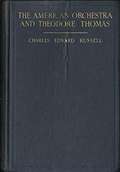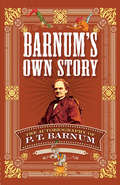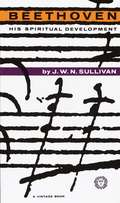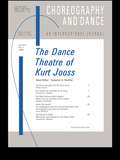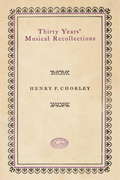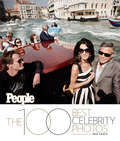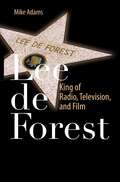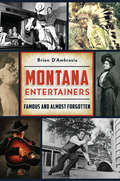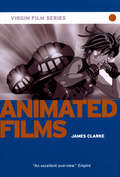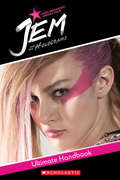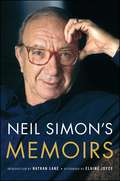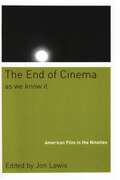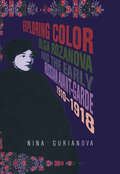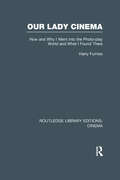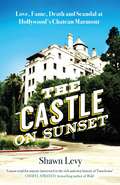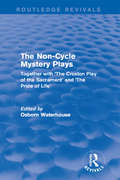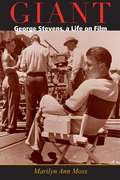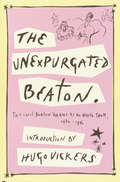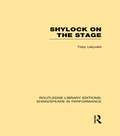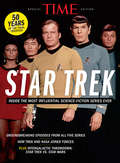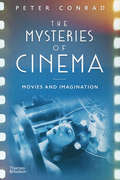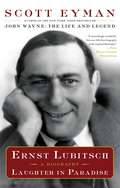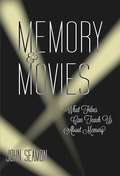- Table View
- List View
The American Orchestra and Theodore Thomas
by Charles Edward RussellThe history of the American orchestra.<P><P> Pulitzer Prize Winner
Barnum's Own Story: The Autobiography of P. T. Barnum
by P. T. BarnumP. T. Barnum's career of showmanship and charlatanry was marked by a surprising undercurrent of honesty and forthrightness. His exuberant autobiography forms a happy combination of all those traits, revealing the whole story of his world-famous hoaxes and publicity stunts. Here is a pageant of nineteenth-century America's gullibility and thirst for marvels, as told by the master of revels himself.A born storyteller, Barnum recalls his association with Tom Thumb, his audience with Queen Victoria, and his trouble keeping Jenny Lind's angelic image intact during a trying tour. He tells of Jumbo, the most famous elephant in history, from the creature's heroic arrival in America to its tragic death in a railroad accident; of his attempts to transfer Shakespeare's house and Madame Tussaud's Waxworks from England to New York; and of his triumphant reentry into public life after financial failure and five disastrous fires had all but wiped him out. The true-life tale of a man of boundless imagination and indomitable energy, Barnum's autobiography embodies the spirit of America's most exciting boom years.
Beethoven: His Spiritual Development
by J. W. N. SullivanFrom the Author's Preface:"I believe that in his greatest music Beethoven was primarily concerned to express his personal vision of life. This vision was, of course, the product of his character and his experience. Beethoven the man and Beethoven the composer are not two unconnected entities, and the known history of the man may be used to throw light upon the character of his music." Clifton Fadiman has said of this classic study:"It is the most interesting book on music that I have ever read and it is not written for musical experts; rather for people like myself who like to listen to music but can boast no special knowledge of it. It deals not only with music, on which I do not speak with authority, but with human life in general, about which you and I speak with authority every day of our lives."
The Dance Theatre of Kurt Jooss
by Suzanne WaltherFirst Published in 1997. Routledge is an imprint of Taylor & Francis, an informa company.
The 100 Best Celebrity Photos: And The Surprising Stories Behind Them
by The Editors of PEOPLESince its first issue debuted with a Great Gatsby portrait of Mia Farrow, People magazine has delivered not only outstanding celebrity journalism, but also the best in personality photography. Now, the Editors of People present The 100 Best Celebrity Photos.From a Marilyn Monroe pin-up to an internet-breaking Kim Kardashian Instagram, from Harry Benson's exuberant snaps of The Beatles' first visit to America to Bradley Cooper's star-packed Oscar selfie, these are the images that influenced how we understand fame and glamor.Included with each picture is the story behind it: A-list photographers tell how they created the images that turned stars into icons, or made legends seem as relatable as family. Here also are People exclusives from the magazine's history of unparalleled access into celebrity homes and off-duty lives that show us the real side of the stars who most captivate and intrigue us.
Alice in Orchestralia
by Ernest La PradeThis book is about musical instruments, the orchestra, and the nature of music through an Alice-like nonsense narrative.
Lee de Forest
by Mike AdamsThe life-long inventor, Lee de Forest invented the three-element vacuum tube used between 1906 and 1916 as a detector, amplifier, and oscillator of radio waves. Beginning in 1918 he began to develop a light valve, a device for writing and reading sound using light patterns. While he received many patents for his process, he was initially ignored by the film industry. In order to promote and demonstrate his process he made several hundred sound short films, he rented space for their showing; he sold the tickets and did the publicity to gain audiences for his invention. Lee de Forest officially brought sound to film in 1919. Lee De Forest: King of Radio, Television, and Film is about both invention and early film making; de Forest as the scientist and producer, director, and writer of the content. This book tells the story of de Forest's contribution in changing the history of film through the incorporation of sound. The text includes primary source historical material, U.S. patents and richly-illustrated photos of Lee de Forest's experiments. Readers will greatly benefit from an understanding of the transition from silent to audio motion pictures, the impact this had on the scientific community and the popular culture, as well as the economics of the entertainment industry.
Montana Entertainers: Famous and Almost Forgotten
by Brian D'AmbrosioTreasure State stars Gary Cooper and Myrna Loy found unparalleled success during the Golden Age of Hollywood. For more than a century, Montana has supplied a rich vein of entertainment and personality--from daredevils to dancers and even mimes. Born in Miles City in 1895, comedian Gilbert "Pee Wee" Holmes played sidekick to such stars as Tom Mix. One-time Butte resident Julian Eltinge went on to become America's first famous female impersonator. There was Taylor Gordon, whose golden voice propelled the son of a slave from White Sulphur Springs to Harlem Renaissance fame. From the little-known Robyn Adair to the ever-popular Michelle Williams, author Brian D'Ambrosio marks Big Sky Country's long-standing connections with America's performing arts.
Animated Films - Virgin Film
by James ClarkeAnimation has never been so popular. The best animated films have combined the latest technology with creativity and a flair for storytelling and are adored by both children and adults. With films such as Monsters, Inc., Shrek and Toy Story capturing the imagination of moviegoers and critics, animated film is enjoying a resurgence unseen since its golden age in the 30s and 40s. From the earliest full-length feature animation, Disney's Snow White and the Seven Dwarfs, through stop-motion animation and Japanese anime to the advent of CGI, this book takes a critical look at animation through the ages and explores its infinite cinematic possibilities.
Jem and the Holograms Movie Handbook
by Howie DewinThe hit TV series and bestselling doll from the 80s is back in a live-action movie from Universal and Hasbro! In theaters everywhere October 23, 2015. Every generation has a voice. Want to find out who you really are - and who you really want to be? We're Jerrica, Aja, Kimber, and Shana - a.k.a. Jem and the Holograms. Inside this book, we took turns learning and sharing stuff about ourselves. And now we're going to help you do the same! So what are you waiting for? Your life is out there! ** Packed with 64 pages of pictures from the movie, plus a pullout poster!**
Neil Simon's Memoirs
by Neil SimonThe complete memoirs of playwright Neil Simon--the author of such iconic works as Lost in Yonkers, The Odd Couple, Biloxi Blues, and The Goodbye Girl--now with a new introduction and afterword.This omnibus edition combines Neil Simon's two memoirs, Rewrites and The Play Goes On, into one volume that spans his extraordinary five-decade career in theater, television, and film. Rewrites takes Simon through his first love, his first play, and his first brush with failure. There is the humor of growing up in Washington Heights (the inspiration for his play Brighton Beach Memoirs) where, despite his parents' rocky marriage and many separations, he learned to see the funny side of family drama, as when his mother screamed thinking she saw a body on the floor in their apartment--it turned out to be the clothes his father discarded in the hallway after a night of carousing. He describes his marriage to his beloved wife Joan, and writes lucidly about the pain of losing her to cancer. The Play Goes On adds to his life's story, as he wins the Pulitzer Prize and reflects with humor and insight on his tumultuous life and meteoric career. Now, with the whole story in one place, Neil Simon's collected memoirs trace the history of modern entertainment over the last fifty years through the eyes of a man who started life the son of a garment salesman and became the greatest--and most successful--American playwright of all time.
The End Of Cinema As We Know It: American Film in the Nineties
by Jon LewisAlmost half a century ago, Jean-Luc Godard famously remarked, "I await the end of cinema with optimism." Lots of us have been waiting forand wondering aboutthis prophecy ever since. The way films are made and exhibited has changed significantly. Films, some of which are not exactly "films" anymore, can now be projected in a wide variety of wayson screens in revamped high tech theaters, on big, high-resolution TVs, on little screens in minivans and laptops. But with all this new gear, all these new ways of viewing films, are we necessarily getting different, better movies? The thirty-four brief essays in The End of Cinema as We Know It attend a variety of topics, from film censorship and preservation to the changing structure and status of independent cinemafrom the continued importance of celebrity and stardom to the sudden importance of alternative video. While many of the contributors explore in detail the pictures that captured the attention of the nineties film audience, such as Jurassic Park, Eyes Wide Shut, South Park: Bigger, Longer and Uncut, The Wedding Banquet, The Matrix, Independence Day, Gods and Monsters, The Nutty Professor, and Kids, several essays consider works that fall outside the category of film as it is conventionally definedthe home "movie" of Pamela Anderson and Tommy Lee's honeymoon and the amateur video of the LAPD beating of Rodney King. Examining key films and filmmakers, the corporate players and industry trends, film styles and audio-visual technologies, the contributors to this volume spell out the end of cinema in terms of irony, cynicism and exhaustion, religious fundamentalism and fanaticism, and the decline of what we once used to call film culture. Contributors include: Paul Arthur, Wheeler Winston Dixon, Thomas Doherty, Thomas Elsaesser, Krin Gabbard, Henry Giroux, Heather Hendershot, Jan-Christopher Hook, Alexandra Juhasz, Charles Keil, Chuck Klienhans, Jon Lewis, Eric S. Mallin, Laura U. Marks, Kathleen McHugh, Pat Mellencamp, Jerry Mosher, Hamid Naficy, Chon Noriega, Dana Polan, Murray Pomerance, Hillary Radner, Ralph E. Rodriguez, R.L. Rutsky, James Schamus, Christopher Sharrett, David Shumway, Robert Sklar, Murray Smith, Marita Sturken, Imre Szeman, Frank P. Tomasulo, Maureen Turim, Justin Wyatt, and Elizabeth Young.
Exploring Color: Olga Rozanova and the Early Russian Avant-Garde 1910-1918
by Nina GurianovaThis is an examination of the paintings, books, poetry and theoretical work of Russian avant-garde artist, Olga Rozanova. The text assesses Rozanova's life and work, aiming to recreate the spirit of the counterculture milieu that contributed to the transformation of 20th-century art.
Our Lady Cinema: How and Why I went into the Photo-play World and What I Found There (Routledge Library Editions: Cinema)
by Harry FurnissThis charming classic of film literature was originally published in 1914 and hence represents an early attempt to catalogue the allure of cinema and how the motion picture industry began. This tale of life in the early days of cinema will be of interest to film historians and anyone interested in that period of history. The book outlines the actors, the producers, the studios and the audiences as well as the advertising and regulation at the time with often amusing stories and facts along with the author’s own drawings. Overall this serves as a fascinating introduction to the making of early films, which at the time was a great mystery to most people.
The Castle on Sunset: Love, Fame, Death and Scandal at Hollywood's Chateau Marmont
by Shawn LevyFor nearly ninety years, Hollywood's brightest stars have favoured the Chateau Marmont as a home away from home. Filled with deep secrets but hidden in plain sight, its evolution parallels the growth of Hollywood itself. Perched above the Sunset Strip like a fairy-tale castle, the Chateau seems to come from another world entirely. An apartment-house-turned-hotel, it has been the backdrop for generations of gossip and folklore: 1930s bombshell Jean Harlow took lovers during her third honeymoon there; director Nicholas Ray slept with his sixteen-year-old Rebel Without a Cause star Natalie Wood; Anthony Perkins and Tab Hunter met poolside and began a secret affair; Jim Morrison swung from the balconies, once nearly falling to his death; John Belushi suffered a fatal overdose in a private bungalow; Lindsay Lohan got the boot after racking up nearly $50,000 in charges in less than two months. Much of what's happened inside the Chateau's walls has eluded the public eye - until now. With wit and prowess, Shawn Levy recounts the wild parties and scandalous liaisons, creative breakthroughs and marital breakdowns, births and untimely deaths that the Chateau Marmont has given rise to. Vivid, salacious and richly informed, the book is a glittering tribute to Hollywood as seen from the suites and bungalows of its most hallowed hotel.
The Non-Cycle Mystery Plays: Together with 'The Croxton Play of the Sacrament' and 'The Pride of Life' (Routledge Revivals)
by Osborn WaterhouseBetween the beginning of the tenth and the end of the sixteenth centuries, in all parts of Great Britain from Aberdeen to Cornwall, performances of liturgical and mystery plays are on record. This book, first published in 1909, is a collection of early-English religious plays with a detailed introduction written by the editor Osborn Waterhouse. The Non-Cycle Mystery Plays will be of interest to students of drama, performance and theatre studies.
Giant
by Marilyn Ann MossMarilyn Mosss Giant examines the life of one of the most influential directors to work in Hollywood from the 1930s to the 1960s. George Stevens directed such popular and significant films as Shane, Giant, A Place in the Sun, and The Diary of Anne Frank.
The Unexpurgated Beaton
by Hugo Vickers Cecil BeatonCecil Beaton was one of the great twentieth-century tastemakers. A photographer, artist, writer and designer for more than fifty years, he was at the center of the worlds of fashion, society, theater and film. The Unexpurgated Beaton brings together for the first time the never-before-published diaries from 1970 to 1980 and, unlike the six slim volumes of diaries published during his lifetime, these have been left uniquely unedited. Hugo Vickers, the executor of Beaton's estate and the author of his acclaimed biography, has added extensive and fascinating notes that are as lively as the diary entries themselves. As one London reviewer wrote, "Vickers' waspish footnotes are the salt on the side of the dish." Beaton treated his other published diaries like his photographs, endlessly retouching them, but, for this volume, Vickers went back to the original manuscripts to find the unedited diaries. Here is the photographer for British and American Vogue, designer of the sets and costumes for the play and film My Fair Lady and the film Gigi, with a cast of characters from many worlds: Bianca Jagger, Greta Garbo, David Hockney, Truman Capote, the Queen Mother and Princess Margaret, Mae West, Elizabeth Taylor, Marlene Dietrich, Rose Kennedy and assorted Rothschilds, Phippses and Wrightsmans; in New York, San Francisco, Palm Beach, Rio and Greece, on the Amalfi coast; at shooting parties in the English countryside, on yachts, at garden parties at Buckingham Palace, at costume balls in Venice, Paris or London. Beaton had started as an outsider and "developed the power to observe, first with his nose pressed up against the glass," and then later from within inner circles. Vickers has said, "his eagle eye missed nothing," and his diaries are intuitive, malicious (he took a "relish in hating certain figures"), praising and awestruck. Truman Capote once said "the camera will never be invented that could capture or encompass all that he actually sees." The Unexpurgated Beaton is a book that is not only a great read and wicked fun but a timeless chronicle of our age.From the Hardcover edition.
Shylock on the Stage (Routledge Library Editions: Shakespeare in Performance)
by Toby LelyveldOriginally published in 1961, this book is a study of the ways actors since the time of Shakespeare have portrayed the character of Shylock. A pioneering work in the study of performance history as well as in the portrayal of Jews in English literature. Specifically it studies Charles Macklin, Edmund Kean, Edwin Booth, Henry Irving and more recent performers.
TIME Star Trek: Inside the Most Influential Science Fiction Series Ever
by The Editors of TIMEFifty years after the birth of the Star Trek phenomenon, the legacy is as alive as ever. In 2016 and 2017, both a new film and television installation will be added to the historic franchise, totaling thirteen feature films and six television series, causing Trekkies to rejoice around the world. The Star Trek series has not only captivated our imaginations, but also our hearts as we adventure alongside Captain Kirk, Captain Picard, Spock and so many more favorite characters through galaxies and lightyears.Relive your favorite moments on this landmark anniversary in the all-new, special edition from TIME, Star Trek: Inside the Most Influential Science-Fiction Series Ever. Starring some of the most iconic characters in Hollywood history ¿ from human beings to extraterrestrials ¿ Star Trek examines how these two species work together to better understand the universe in which they live. Over the past fifty years, Star Trek has explored the future, and perhaps more importantly, the human condition, inspiring Trekkies all around the world to live long and prosper.
The Mysteries of Cinema: Movies And Imagination
by Peter ConradRanging from the late nineteenth century to the present day, this exhilarating survey by cultural critic Peter Conrad explores the ways film has changed how we see the world. This is a thematic roller-coaster ride through cinema history, with film expert Peter Conrad in the seat beside you. Thoroughly international, this book ranges from Fay Wray to Satyajit Ray, from Buster Keaton to Kurosawa, from westerns to nouvelle vague. Conrad explores the medium’s relationship to speed, technology, fantasy, horror, dream, color, sound, light, and shadow with reference to scores of films, from the earliest nineteenth-century silent experiments to the latest multisensory Hollywood blockbusters. The author’s insights are amplified by voices from inside and outside the industry: directors and critics are included alongside artists, writers, philosophers, and historians ranging from Leo Tolstoy to Salvador Dalí, Theodor Adorno to Philip Roth. Arranged by topics, such as “Meta-Movie” and “The Physics of Film,” rather than chronological events, The Mysteries of Cinema focuses on film’s otherworldly, hypnotic, and magical qualities. Perfect for both movie fans who will discover new films and directors, and for students of film who will see familiar classics in a new light, this volume is full of unique insights into the genre. Combining his vast knowledge with a forensic eye for a director’s every quirk and mannerism, Conrad offers a fascinating and thrilling exploration of film.
Ernst Lubitsch: Laughter in Paradise
by Scott Eyman"Highly recommended" (Library Journal): The only full-length biography of legendary film director Ernst Lubitsch, the director of such Hollywood classics as Trouble in Paradise, Ninotchka, and The Shop Around the Corner.In this groundbreaking biography of Ernst Lubitsch, undeniably one of the most important and influential film directors and artists of all time, critic and biographer Scott Eyman, author of the critically acclaimed New York Times bestseller John Wayne, examines not just the films Lubitsch created, but explores as well the life of the man, a life full of both great successes and overwhelming insecurities. The result is a fascinating look at a man and an era--Hollywood's Golden Age. Born in Berlin and transported to Hollywood in the 1920s with the help of Mary Pickford, Lubitsch brought with him a level of sophistication and subtlety previously unknown to American movie audiences. He was quickly established as a director of unique quality and distinction. He captivated audiences with his unique "touch," creating a world of fantasy in which men are tall and handsome (unlike Lubitsch himself) and humorously adept at getting women into bed, and where all the women are beautiful and charming and capable of giving as well as receiving love. He revived the flagging career of Marlene Dietrich and, in Ninotchka, created Greta Garbo's most successful film. When movie buffs speak of "the Lubitsch touch," they refer to a sense of style and taste, humor and humanity that defined the films of one of Hollywood's all-time great directors. In the history of the medium, no one has ever quite equaled his unique talent. Written with the cooperation of an extraordinary ensemble of eyewitnesses, and unprecedented access to the files of Paramount Pictures, this is an enthralling biography as rich and diverse as its subject--sure to please film buffs of all types, especially those who champion Lubitsch as one of the greatest filmmakers ever.
Film Genere Holywood And Beyond
by Barry LangfordThe overall approach of Film Genre: Hollywood and Beyond situates genres in their historical - primarily, cultural and (film) industrial contexts; the overarching context of the book is the transition from the ‘classical’ Hollywood system to a ‘post-classical’ mode that extends to the present day. In making this separation, I neither explicitly challenge nor endorse arguments about the extent to which ‘post-classical’ Hollywood represents a qualita¬tively different set of visual stylistics in Hollywood film.
Memory and Movies
by John SeamonIn the movie Slumdog Millionaire, the childhood memories of a young game show contestant trigger his correct answers. In Memento, the amnesiac hero uses tattoos as memory aids. In Away from Her, an older woman suffering from dementia no longer remembers who her husband is. These are compelling films that tell affecting stories about the human condition. But what can these movies teach us about memory? In this book, John Seamon shows how examining the treatment of memory in popular movies can shed new light on how human memory works. After explaining that memory is actually a diverse collection of independent systems, Seamon uses examples from movies to offer an accessible, nontechnical description of what science knows about memory function and dysfunction. In a series of lively encounters with numerous popular films, he draws on Life of Pi and Avatar, for example, to explain working memory, used for short-term retention. He describes the process of long-term memory with examples from such films as Cast Away and Groundhog Day; The Return of Martin Guerre, among other movies, informs his account of how we recognize people; the effect of emotion on autobiographical memory is illustrated by The Kite Runner, Titanic, and other films; movies including Born on the Fourth of July and Rachel Getting Married illustrate the complex pain of traumatic memories. Seamon shows us that movies rarely get amnesia right, often using strategically timed blows to the protagonist's head as a way to turn memory off and then on again (as in Desperately Seeking Susan). Finally, he uses movies including On Golden Pond and Amour to describe the memory loss that often accompanies aging, while highlighting effective ways to maintain memory function.
